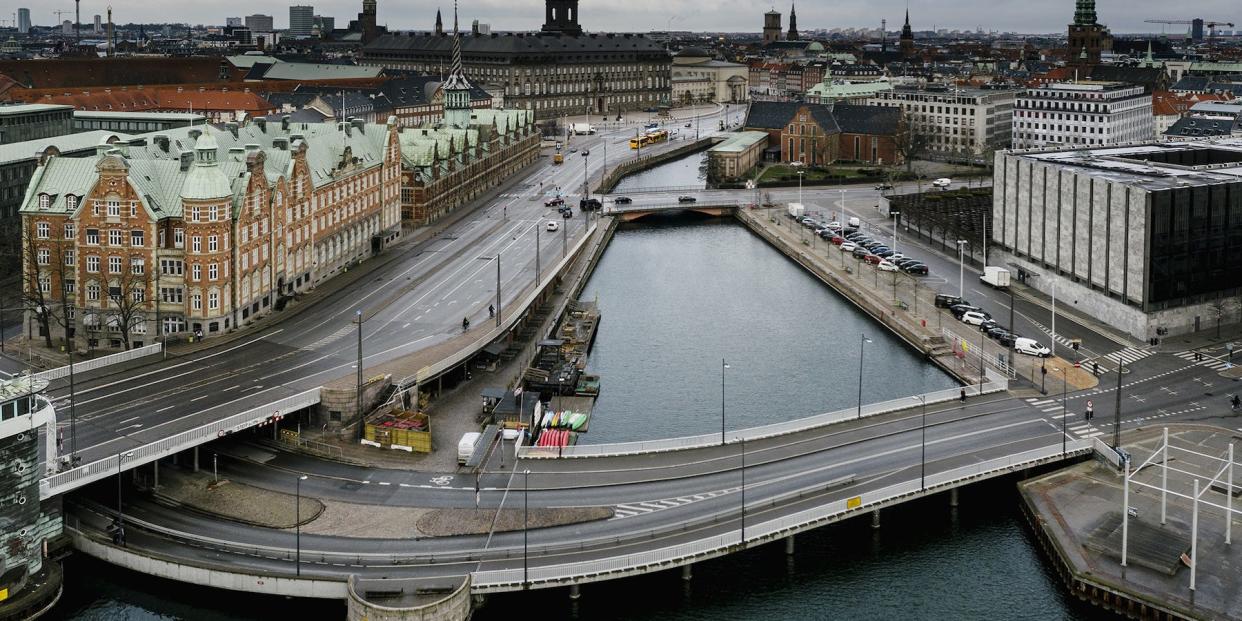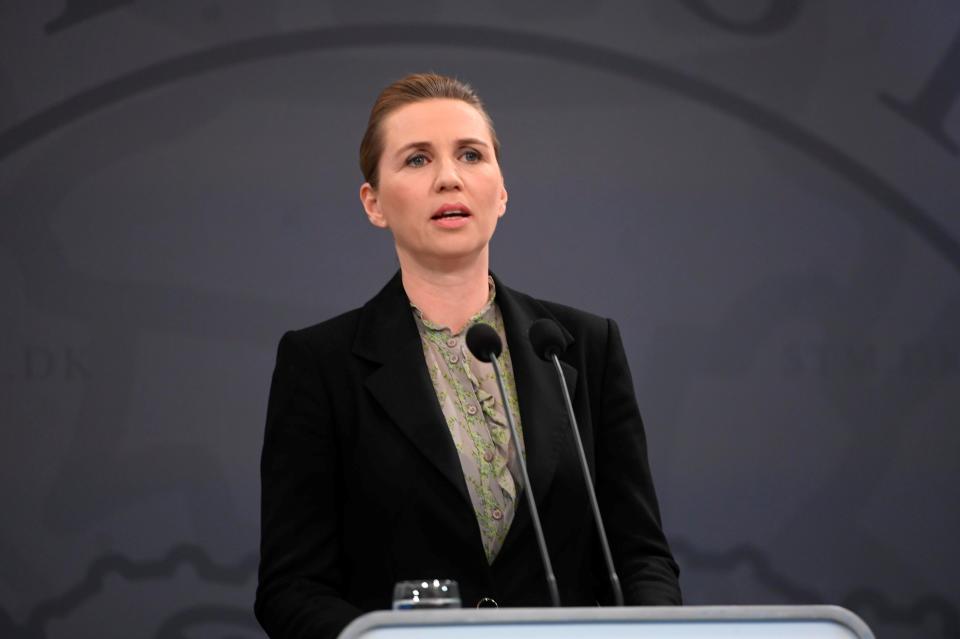Denmark rushed to lock down before almost every other country. Now its response is so far ahead that it's starting to remove restrictions.

Rasmus Degnbol/Anadolu Agency via Getty Images
Denmark is now starting to ease some of its COVID-19 restrictions. It will re-open schools and daycare centers on April 15 as its first step towards lifting its lockdown.
Denmark was the second country in Europe to announce a lockdown to limit the spread of the coronavirus, doing so before the country had even reported its first death.
Prime Minister Mette Frederiksen warned that social distancing measures will remain, and that the country can't reopen too quickly.
The Danish restrictions were never as stringent as many countries in Europe and beyond, but seem to have been adhered to very closely.
The country recorded 5,830 cases and 237 deaths as of Friday morning. New daily figures have yet to consistently decline, but remain lower than in many other countries.
Video: What Could Be the Fastest Way to End the Coronavirus Crisis?
Having so far avoided mass coronavirus infections, Denmark is planning to lift some of its lockdown restrictions, even as some of Europe's worst-hit countries warn that their outbreaks are yet to peak.
Europe has become a new epicenter for the coronavirus, ravaging Italy and Spain in particular.
But Denmark — a nation of 5.6 million — took remarkably swift action to lock itself down and try and stop COVID-19 from spreading. It appears to have helped it survive the worst of the crisis.
It was the second country in Europe to announce a lockdown, on March 11. It did so before it reported any deaths from the virus.
Denmark was behind only Italy, which was already one of the world's worst-hit nations when it imposed nationwide restrictions.
But now Denmark — along with a few other European countries: Norway, Austria, and the Czech Republic — is considering how to gradually lift its restrictions.
Prime Minister Mette Frederiksen said the process "will probably be a bit like walking the tightrope."
"If we stand still along the way we could fall and if we go too fast it can go wrong. Therefore, we must take one cautious step at a time."
She announced on Monday that the country will reopen daycare centers and schools on April 15.

Ritzau Scanpix/via REUTERS
As of Friday morning, Denmark had reported 5,830 cases and 237 deaths from the coronavirus.
The country appears to be seeing a dropoff in its new cases, which remain low compared to many countries.
It saw 233 new cases on April 9, compared to 331 new cases on April 8 and 390 new cases on April 7.
It reported 19 deaths on April 9, 15 deaths on April 8, 16 deaths on April 7.

Alexander Spatari/Getty Images
Denmark's gamble to slowly reopen country came as the World Health Organization warns against relaxing restrictions.
It pointed to some countries close to China, which managed to keep the virus at bay for months only to see surges in cases as they relaxed their coronavirus suppression measures.
Indeed, Frederiksen warned that cases and deaths could start to rise again if people don't follow government advice.
"If we open Denmark too quickly again we risk that infections rise too sharply and then we have to close down again."

Ritzau Scanpix/Niels Christian Vilmann via Reuters
The Danish restrictions that will remain in place for another four weeks include bans on public gatherings of more than 10 people, and border controls.
Denmark's lockdown, which came into effect on March 11, never got as strict as those in many other nations, where people were limited in leaving their homes.
This meant that people in Denmark were not limited in going outside, could still attend events with fewer than 10 people, and get takeaway food and drinks from restaurants and cafes.
The country initially used a "containment" strategy, which Danish police said based on "fast diagnosis, contact tracing and quarantine of those evaluated to be at risk."
But as it spread, the police said their early plan became "irrelevant" and Denmark moved to a "mitigation strategy," which banned large gatherings and protected the most vulnerable people.
These are the measures in Denmark:
People are urged stay one to two meters from each other.
Gatherings of more than 10 people, indoors or outdoors, are banned.
People are urged to minimize trips to busy places like supermarkets and regularly wash their hands.
Businesses where people come into close contact, like restaraunts, salons or nightclubs, are closed.
Schools and daycares are closed.
Public employees with "non-critical functions" were sent home.
People cannot visit nursing homes or hospitals.

